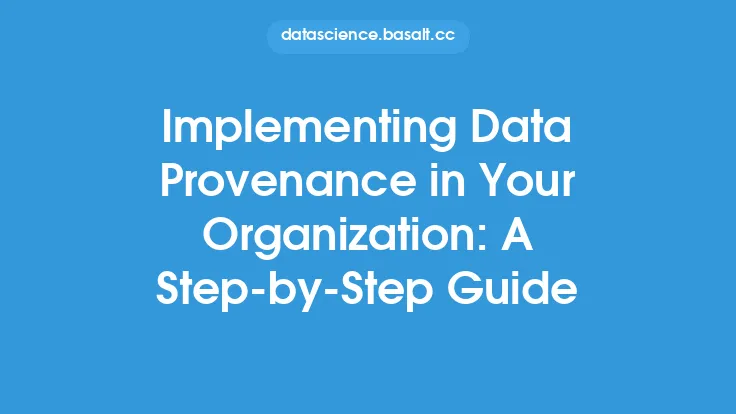Preparing your data for analysis is a crucial step in the data analysis process. It involves a series of steps that help to ensure that your data is accurate, complete, and in a suitable format for analysis. In this article, we will walk you through a step-by-step guide on how to prepare your data for analysis.
Introduction to Data Preparation
Data preparation is the process of transforming raw data into a clean, organized, and structured format that can be used for analysis. It involves a series of steps, including data cleaning, data transformation, and data formatting. The goal of data preparation is to ensure that your data is accurate, complete, and consistent, and that it can be easily analyzed and interpreted.
Data Cleaning
Data cleaning is the first step in the data preparation process. It involves identifying and correcting errors, inconsistencies, and inaccuracies in the data. This can include handling missing values, removing duplicates, and correcting data entry errors. Data cleaning is an important step because it helps to ensure that your data is accurate and reliable. There are several techniques that can be used for data cleaning, including data profiling, data validation, and data normalization.
Data Transformation
Data transformation is the process of converting data from one format to another. This can include aggregating data, grouping data, and pivoting data. Data transformation is an important step because it helps to ensure that your data is in a suitable format for analysis. There are several techniques that can be used for data transformation, including data aggregation, data grouping, and data pivoting.
Data Formatting
Data formatting is the process of organizing and structuring data in a way that makes it easy to analyze and interpret. This can include formatting data into tables, charts, and graphs. Data formatting is an important step because it helps to ensure that your data is presented in a clear and concise manner. There are several techniques that can be used for data formatting, including data visualization, data summarization, and data reporting.
Handling Missing Values
Handling missing values is an important step in the data preparation process. Missing values can occur when data is not available or when data is incomplete. There are several techniques that can be used to handle missing values, including imputation, interpolation, and deletion. Imputation involves replacing missing values with estimated values, while interpolation involves estimating missing values based on surrounding data. Deletion involves removing missing values from the dataset.
Data Quality Check
A data quality check is an important step in the data preparation process. It involves verifying that the data is accurate, complete, and consistent. A data quality check can include checking for errors, inconsistencies, and inaccuracies in the data. It can also include checking for missing values, duplicates, and outliers.
Data Storage and Management
Data storage and management is an important step in the data preparation process. It involves storing and managing data in a way that makes it easy to access and analyze. There are several techniques that can be used for data storage and management, including data warehousing, data archiving, and data backup. Data warehousing involves storing data in a centralized repository, while data archiving involves storing data in a secure and compressed format. Data backup involves creating a copy of the data to prevent loss or corruption.
Data Security and Access Control
Data security and access control is an important step in the data preparation process. It involves protecting data from unauthorized access, use, or disclosure. There are several techniques that can be used for data security and access control, including data encryption, access control, and authentication. Data encryption involves converting data into a secure and unreadable format, while access control involves restricting access to authorized personnel. Authentication involves verifying the identity of users before granting access to the data.
Conclusion
Preparing your data for analysis is a crucial step in the data analysis process. It involves a series of steps, including data cleaning, data transformation, and data formatting. By following these steps, you can ensure that your data is accurate, complete, and in a suitable format for analysis. Remember to always handle missing values, perform a data quality check, and store and manage your data in a secure and accessible manner. By doing so, you can ensure that your data is reliable, consistent, and accurate, and that it can be easily analyzed and interpreted to gain valuable insights and make informed decisions.





